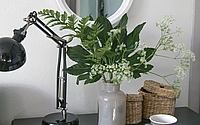Tips and Tricks to Growing and Arranging Your Own Bouquet of Flowers
If you’re looking to create the perfect bouquet of flowers from scratch, you know that you’re committing to a long-term product that requires consistent care and effort. This being said, the finished product can be stunning and provide a perfect gift for someone special or be kept for yourself to brighten up a room in your home. The following will explore a few important tips and tricks you might want to keep in mind if you’re looking to grow and arrange your own bouquet of flowers.
Selecting The Right Flowers
First and foremost, you need to select the flowers that you want to grow and trim. This is not a step to be glossed over because the flowers you select will have an impact on the feeling of your bouquet, the aroma that comes along with it, and the ease of your next few weeks or months as you tend to your plant babies.
If there’s a color scheme you want because the bouquet is for a particular season or event, you can begin the process by eliminating any of the flower options that don’t suit this color scheme. Once that’s done, you can then limit your list by blooming season. This might take a little bit of time to research, but you want to be sure that at the time you’re planning on cutting your blossoms away from their plants that each of the flower species you select is thriving and at its most full (or a few days away from it’s most full if you want the bouquet to last a little longer).
While you’re making your selection, understand that you should give yourself arrangement options. This means you’re going to want a few bigger, statement flowers, bunches of thinner, more wispy flowers, and some grasses or leaves that don’t have blossoms on them; tossing in a few leaves from a monstera (Swiss cheese plant) for example, can radically change up the feeling of your bouquet. Vines can also make a wonderful addition to a bouquet as they tend to offer uniquely shaped leaves. Open yourself up to unusual elements like berries, pinecones, or pretty weeds.
Finally, when it comes to selecting the right flowers, you want to be sure that you’re researching the symbolic meaning of your selection before you make the final choice. Sometimes flowers have implications you might not want, especially if you’re going to be giving the bouquet away for a particular occasion. While most people aren’t consciously aware of flower symbolism, on a deeper level, movies, television shows, cultural norms, and fairy tales have all shaped our understanding of what a particular flower means. Beyond the meaning of the particular flowers, you might also want to look into whether the specific color of a flower has a meaning. Roses, for instance, mean different things depending on what color they are.
Planting Seeds
Once you’ve chosen the flowers you want to include, order your seeds. You can also do a quick online search to see if there’s a seed library in your area. Yes, seed libraries exist and are as easy to use as a standard library. You’ll be given a set of instructions when you select your seeds regarding taking new seeds from the plants once they’re grown to give back to the library.
Whatever way you go about getting your seeds, It’s a good idea to err on the side of too many flowers rather than too few; the leftovers can simply be kept in their pot or transplanted outside into your garden. There’s no such thing as too many flowers.
Take the time to read the packages of your seeds and make sure that any specific steps are followed carefully. Every species of plant is different and requires a different form of care and environment. While you’re at it, figure out the times you’re going to plant each seed type to help ensure that they all bloom at around the same time. Most seed packages will let you know how long after planting you can expect blossoms.
Take special care to ensure that you meet soil pH requirements as well as temperature and humidity requirements when planting your seeds, either in indoor pots or outdoor environments. Don’t assume that you can water all of your seeds the same amount on a regular schedule. Each type of seed will need its own watering schedule, and often, the schedule will always be changing depending on the warmth of the weather and other factors. Most experienced gardeners will determine what the ideal soil moisture is for a particular plant and get comfortable sticking their hands into the posts to feel how moist or dry the soil is and using this to determine how much, if any, water is needed.
Drainage For Indoor Plants
If you’re growing your bouquet flowers indoors, you need to give some attention to drainage. All plants need proper drainage if they’re going to grow without the threat of mold or other fungi. If the pots you’ve selected have holes in the bottom and a little dish to catch the water that comes out, that will work. If they don’t, you’re going to want to build up a layer of rocks at the bottom of the pot. This will allow water to seep down to the bottom without waterlogging the soil. To help reduce the risk of rotting, mold, or fungi, you can also sprinkle a layer of horticultural charcoal atop your rocks before adding the soil. This will make it harder for bacteria and other problematic things to grow within your soil without threatening your plant.
Grow Lights For Indoor Plants
If you’re growing the flowers inside in an area that doesn’t have much light, or if it’s wintertime and so there are fewer hours of light per day than ideal, you might want to look into grow lights. This can come in the form of lamps that you purchase and set up in your home, or it can involve changing out the lightbulbs in the room where your plant lives to grow bulbs. These can usually be found at your local hardware store and will help provide plants with what they need to grow even in darker winter months.
Monitor And Adjust
As you care for your plant babies and they start growing, you’re going to want to pay attention to any signs of unhappiness. If leaves become discolored, plants wilt or anything else starts to happen that you do not love the look of, it’s important that you do some research on these symptoms and quickly adjust your care methods. Just like people, plants have preferences and needs, and if these needs aren’t met, it’s harder for them to thrive. Don’t ignore signs of struggle or tell yourself that they’ll improve without your intervention. Take the time to diagnose what’s wrong and make the appropriate changes. This is the most important step if you want thriving plants.
Consider Colour Treatment
Depending on the bouquet vibe you’re going for, you might want to include a color treatment once you see the full bloom of the flowers you’ve chosen. If you put food coloring into a plant’s water, the flowers will take on a bit of the hue selected. This can result in hyper-vibrant flowers in crisp colors. It’s a good idea to cut the flowers away that you want to tint and put them in a vase filled with colored water.
Select Your Binding Element
Depending on the purpose of your bouquet, you’re going to want to select something to tie the flowers together with. This might be a shiny ribbon or some rustic-feeling twine. Make your selection, and be sure to have it ready before you start the remaining steps.
Cut Your Flowers
When you’re ready to begin constructing your bouquet, you’ll want to cut your flowers. Give yourself far more stem than you think you’ll need, as this will present you with the most arrangement options. Remind yourself that you can trim the flowers later on if you decide you want them shorter.
Arrange And Rearrange
Lay your flowers out on a clean working surface and play around with them. The goal is often to create texture and variety so be sure to alternate which flowers you place next to each other and ensure that your selections are aligned at different heights (do not cut them yet, simply raise or lower the flowers—you can’t uncut them once you take the scissors to the stem).
Once you’re happy with the layout, begin wrapping your bouquet together using the binding element you’ve chosen and set aside. It’s okay to tie everything with something sturdy and then cover that up with prettier wrapping. Once you’re pleased with the look of your bouquet all wrapped up, you can trim any stems that are misaligned or sticking out a little too far. Feel free to spray with a floral setting spray if you feel that’s needed.
There you have it. Growing and arranging a bouquet can be incredibly peaceful and relaxing. After the bouquet is finished, remember that you can hang it upside down, and it will dry out but retain most of its beauty. Dried flower arrangements can be kept in your home as decorations or souvenirs from special days in your life.
- by Matt Watts








